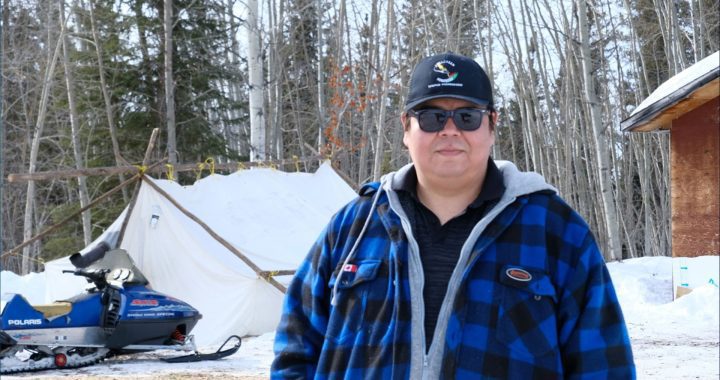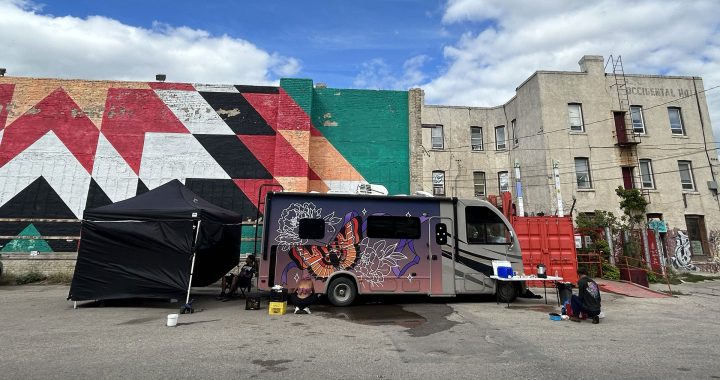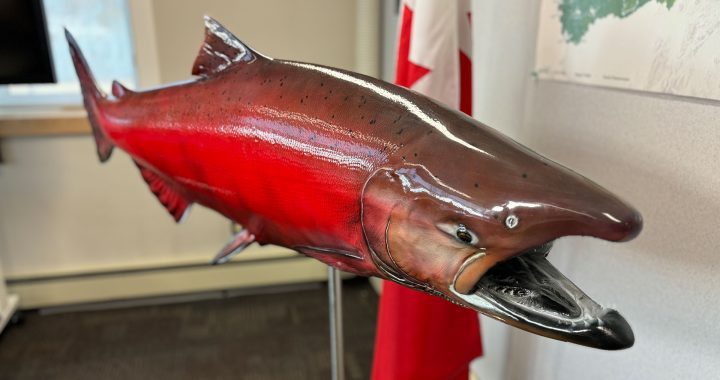The Prime Minister announced help today for northwestern Saskatchewan – the jurisdiction in Canada where Indigenous communities have been hardest hit by COVID 19.
In his daily press conference, Justin Trudeau announced support for the Meadow Lake Tribal Council and the Metis Nation-Saskatchewan for their pandemic response plan and said that Canada has been working closely with communities in northern Saskatchewan since their outbreak.
“It’s become very clear there that those communities need this work to continue,” Trudeau said. “Through this plan we’re partnering with communities to provide over $2.3 million.”
Tribal Chief Richard Ben of the Meadow Lake Tribal Council said food is an issue in their nine First Nations communities.
He said residents are locked down at home, they can’t leave their communities to shop for groceries and the local stores are too small and expensive to supply people with what they need.
He said among other things, the money received will be used to stockpile food and pay security personnel working in communities and on blockades.
The tribal council said it will also be putting the money towards educating the public and on mental health support.
“Because as you know a lot of our people are staying indoors doing nothing and getting really stir crazy,” Ben said. “So it takes a big toll on your mental health.”
Glen McCallum, president of the Metis Nation-Saskatchewan said the money will also be used for things like providing isolation units, personal protection equipment and help for the homeless.
Both McCallum and Ben said they reached out to Indigenous Services Canada (ISC) two to three weeks ago and they commend ISC for their response to their request.
McCallum said his priority now is to get elders and vulnerable people from La Loche safely isolated and said the money from Canada will help with that.
“It takes a lot of effort sometimes when you don’t have the capability or capacity, structure wise to be able to isolate individuals,” McCallum said. “It costs a lot of money and it’s great for the federal government to give us those dollars to able to do the job that needs to be done taking care of our people.”
McCallum said their situation is critical because many of the Metis communities are remote and far from hospitals.
Ben cautions against provinces and regions opening up and releasing restrictions too early. He said this could give a false sense of safety to northern communities who need to continue to lock down.
McCallum said next he and Ben will be speaking with provincial government officials on issues such as road checkpoints and travel in and out of northern Saskatchewan.
Flattening the curve
First Nations people who live on reserves across Canada “show signs of flattening” their COVID-19 curve but still need to be “very concerned” about a second wave of the novel coronavirus as provinces start loosening restrictions and reopening their economies, officials from ISC said at a press conference Thursday.
The top doctor at ISC is “cautiously optimistic” about the situation and praised the “impressive” and “decisive” steps taken by leaders on the ground. He urged communities to keep acting as they deem necessary.
“As different jurisdictions are entering into the early stage of reopening of the economy, it is important to recognize the inherent rights and self-determination of First Nations, Inuit and Metis people,” said Dr. Tom Wong, chief medical officer at ISC’s First Nations Inuit Health Branch (FNIHB)
“Communities will decide what is best for them in the unique context of remoteness, access to health services, living conditions and the prevalence of underlying medical conditions.”
Wong attributed the relatively low numbers on reserves to the successful implementation of public health measures – including lockdowns, physical distancing, swift isolation and hand washing.
But ISC Minister Marc Miller warned that the potential for new outbreaks in First Nations, Inuit and Metis communities remains serious.
“We should be very concerned” he responded when asked by APTN News. “As we know, until such time as a vaccine is found and distributed and administered the risk of second and third waves is very real.”
Remoteness and front-line leadership have sheltered some communities from exposure to COVID-19, Miller stated before stressing that “we need to remain vigilant.”
He also noted “a number of challenges” may arise as local Indigenous leaders exercise jurisdiction to determine what’s best for their territories.
As the pandemic progressed, health checkpoints and road closures enforcing non-essential travel bans occasionally created tension in places like northwestern Saskatchewan, Manitoulin Island, Ont., and Oka, Que.
“That’s something we will be turning our minds to and have started to turn our minds to as we attempt provide additional supports, air continuity, food security, all supports that Indigenous communities need to weather this global pandemic,” the minister said.
In early April, police in Kahnawake Mohawk Territory issued $12,000 to individuals defying local and provincial public health directives by entering the community to buy cigarettes despite a community ban on tobacco sales.
Wong reiterated that ISC only has “timely epidemiological data” for those living on reserves or in the traditional homelands of the Inuit in Canada. The department does not have data that accurately represents COVID-19’s impact on Indigenous people who live in cities, towns and villages.
“There are many more cases elsewhere in Canada involving First Nations, Metis and Inuit with COVID-19 being reported to the provinces and territories,” he said.
“We need help from provincial and territorial health department agencies to support Indigenous peoples to get a comprehensive epidemiological picture beyond First Nations on reserve.”
Miller acknowledged that urban Indigenous communities can sometimes be “even more vulnerable” than those who live on reserves.
He pointed to the $15-million portion of the Indigenous Community Support Fund which was allocated for off-reserve social service providers like friendship centres.
However, he admitted the figure “is absolutely not sufficient” and said more supports are in the works. He did not elaborate on what those may be or when they could be expected.









